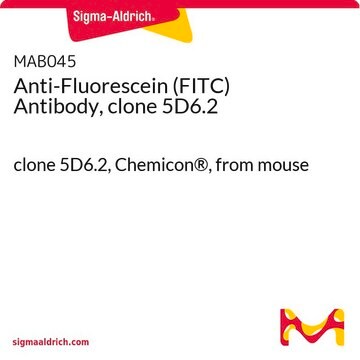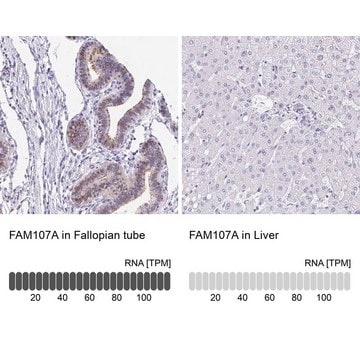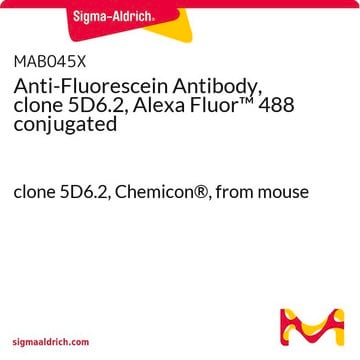11426338910
Roche
Anti-Fluorescein-AP, Fab fragments
from sheep
Sinónimos:
antibody
About This Item
Productos recomendados
biological source
sheep
Quality Level
conjugate
alkaline phosphatase conjugate
antibody form
affinity purified immunoglobulin
antibody product type
primary antibodies
clone
polyclonal
form
solution
packaging
pkg of 150 U (200 μl)
manufacturer/tradename
Roche
isotype
IgG
storage temp.
2-8°C
Categorías relacionadas
General description
Specificity
Application
- Dot blot
- ELISA
- Immunohistocytochemistry
- In situ hybridization
- Southern blot
- Western blot
- Electrochemical biosensing technique for the detection of 16S rRNA
Biochem/physiol Actions
Features and Benefits
Solution, stabilized
Preparation Note
- Working concentration: The following concentrations depend on application and substrate and should be taken as a guideline. Dot blot: 150mU/ml
- ELISA: 150 to 300mU/ml
- Immunohistocytochemistry: 250 to 500mU/ml
- In situ hybridization: 1.5 to 7.5U/ml
- Southern blot: 150mU/ml
- Western blot: 250 to 500 mU/ml
Working solution: 100mM Tris-HCl, 150mM NaCl, pH 7.5. If necessary 1% Blocking reagent (w/v), dry milk powder, 1 to 5% heat inactivated fetal calf serum (v/v) or sheep normal serum can be used for reduction of unspecific binding.
Other Notes
Not finding the right product?
Try our Herramienta de selección de productos.
signalword
Warning
hcodes
Hazard Classifications
Skin Sens. 1
wgk_germany
WGK 1
flash_point_f
No data available
flash_point_c
No data available
Certificados de análisis (COA)
Busque Certificados de análisis (COA) introduciendo el número de lote del producto. Los números de lote se encuentran en la etiqueta del producto después de las palabras «Lot» o «Batch»
¿Ya tiene este producto?
Encuentre la documentación para los productos que ha comprado recientemente en la Biblioteca de documentos.
Los clientes también vieron
Nuestro equipo de científicos tiene experiencia en todas las áreas de investigación: Ciencias de la vida, Ciencia de los materiales, Síntesis química, Cromatografía, Analítica y muchas otras.
Póngase en contacto con el Servicio técnico











